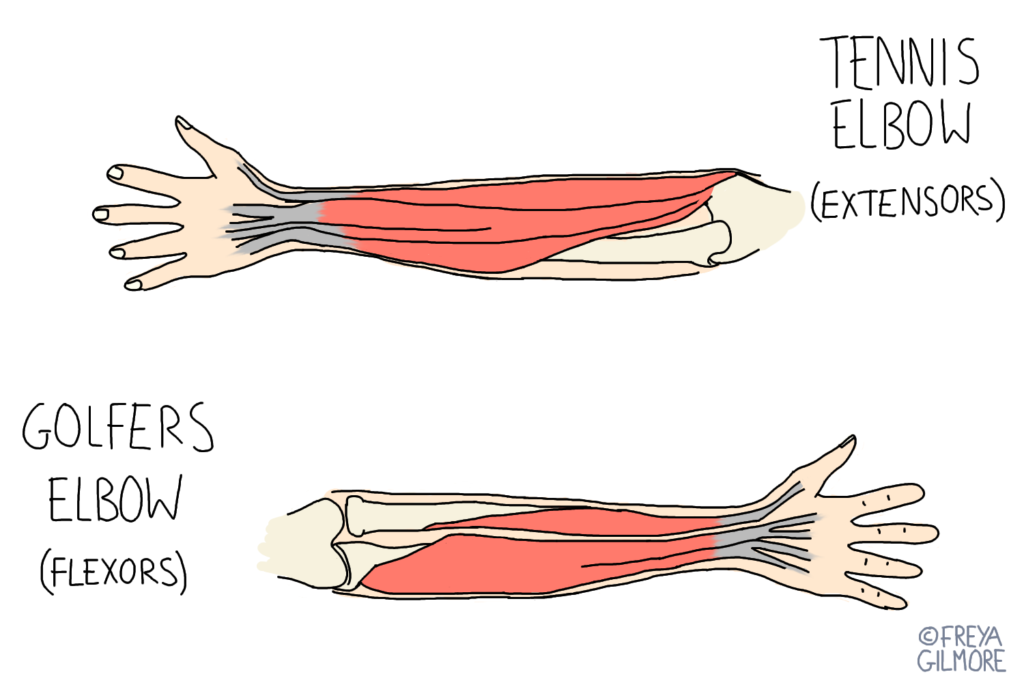Golfer’s and Tennis Elbow are two common causes of elbow pain, affecting up to 3/100 adults each year. Those between the ages of 35-55 are most likely to develop them. The conditions are not always associated with the sports they are named after. Tennis elbow is an overstrain of the muscles that bend the wrist backwards, whereas golfer’s elbow is the opposite. This overstrain can be the result of sport, manual work, or other physical demands. The conditions’ technical terms are medial and lateral epicondylitis, in reference to inflammation at the point where the muscles join bone.
Symptoms and Onset
Typical symptoms of tennis or golfer’s elbow are:
- pain and tenderness just below the elbow, on the outside for tennis and the inside for golfer’s elbow
- this pain may spread down the forearm, sometimes into the fingers
- the same pain may also be elicited by engaging the muscles in question- bringing the wrist forwards or backwards
- grip strength may be weakened
- you might find that pain is reduced by a cool compress, rest, or anti inflammatory painkillers
Symptoms can come on gradually, or follow a minor sports injury. A strained muscle in itself does not constitute epicondylitis, but repeated injury may encourage the inflammation characteristic of the condition. If you continue the activity that aggravates it, you will likely find that pain is more readily initiated. Initially it will only be present after the activity, but as the condition develops, pain begins earlier on in the activity. If left untreated, it may become reactive enough for the pain to stop you from doing the activity at all.

The Process of Epicondylitis
Despite the name, the inflammatory phase of the condition only lasts a short while, right at the start of the problem. Following this, theories are that repeated tiny muscle tears maintain the pain. Over time, degeneration becomes a consideration, and blood supply may be limited, which further complicates the healing process. Resolution depends on the improvement of each persisting factor.
Managing Golfer’s and Tennis Elbow
The first step is to stop aggravating the problem, if possible. If your work or exercise involves holding a thin handled object with some force, you might find that a broader grip eases the demand on the muscles. Simply adding another roll of grip tape to your tennis racket may be enough in mild cases.
Your osteopath’s role is to identify the factors that are maintaining your symptoms, as well as working to ease the load with treatment. This often involves some direct work to the affected muscles to relieve tension and encourage inflammation to move along. Work for the shoulder, wrist, or upper back may also be appropriate, as problems here can put more demand on the muscles around the elbow. Alongside treatment in clinic, and exercises at home, we can also give advice to help you to progress between appointments. Most cases resolve within 6-12 months, but sometimes they can persist for over a year. The sooner we can identify the problem, the better the prognosis, so click below to book in.
Click here to make an appointment for your Golfer’s or Tennis Elbow in Umm Seqeim.
